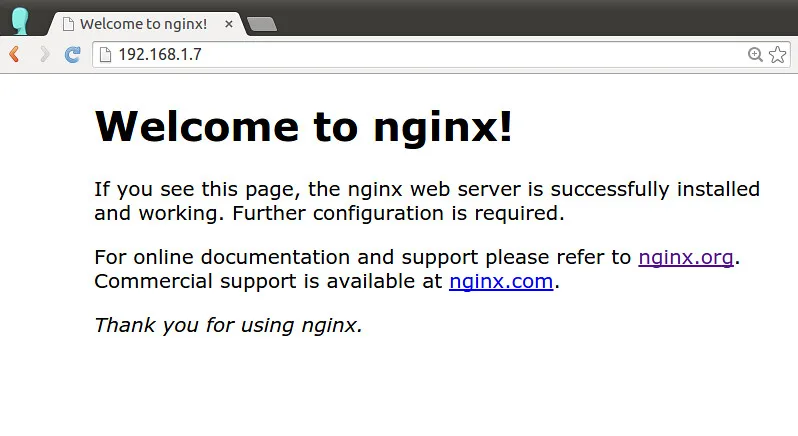
In today’s digital age, managing web servers has become increasingly crucial for individuals and businesses alike. However, the complexities of configuring reverse proxies and securing connections can often be daunting, especially for beginners. Enter Nginx Proxy Manager – a game-changer in the world of web server management. In this guide, we’ll explore what Nginx Proxy Manager is and how you can effortlessly set it up on your Raspberry Pi.
What is Nginx Proxy Manager?

Nginx Proxy Manager is a powerful yet user-friendly web interface designed to simplify the management of Nginx reverse proxy configurations. Instead of tinkering with complex code, users can now control their web server settings through an intuitive dashboard. Here’s why Nginx Proxy Manager stands out:
1. Web Interface for Nginx
Gone are the days of manually editing Nginx configurations. With Nginx Proxy Manager, you can easily manage reverse proxy settings through a visually appealing dashboard. Whether you’re a seasoned developer or a novice user, the web interface makes server management a breeze.
2. Exposes Web Services Securely
Nginx Proxy Manager enables you to make internal web services accessible from outside your network securely. For instance, you can access your personal media server or home automation dashboard remotely, even while traveling. This ensures convenience without compromising security.
3. Free SSL Certificates with Let’s Encrypt
Security is paramount when it comes to web communication. Nginx Proxy Manager seamlessly integrates with Let’s Encrypt to provide automatic SSL certificate issuance and renewal. Say goodbye to manual certificate management and enjoy encrypted connections without hassle.
4. Docker Container Deployment
Setting up Nginx Proxy Manager is a breeze, thanks to its Docker container deployment. Whether you’re running it on your Raspberry Pi, cloud server, or NAS, the process is straightforward with minimal setup required. Docker simplifies deployment, making it accessible to users of all skill levels.
5. User-Friendly Interface
Navigating complex server configurations is made easy with Nginx Proxy Manager’s user-friendly interface. From managing domains to setting up redirects, everything can be done through a clear and intuitive web UI. Adding a new domain to your server is as simple as a few clicks.
6. Enhanced Security Features
Nginx Proxy Manager prioritizes security with features like access control, basic HTTP authentication, and support for secure communication protocols. You can restrict access to specific services and ensure that all connections are encrypted, keeping your data safe from prying eyes.
7. Advanced Options for Experienced Users
While beginners will appreciate the simplicity of the web interface, experienced users have the flexibility to dive deeper into server configurations. Nginx Proxy Manager offers full Nginx configuration editing, allowing for fine-tuning of settings according to specific requirements.
8. Multi-User Support
Collaboration is made easy with Nginx Proxy Manager’s multi-user support. You can grant different levels of access to users, allowing them to manage specific domains or all configurations based on their role. This makes it ideal for teams working on server setups collaboratively.
9. Open-Source and Free
Perhaps the best part about Nginx Proxy Manager is that it’s open-source and free to use. There are no licensing fees or vendor lock-ins, ensuring that you can enjoy its benefits without any financial commitment.
How to Run Nginx Proxy Manager on Raspberry Pi
Now that you’re familiar with the features of Nginx Proxy Manager, let’s dive into setting it up on your Raspberry Pi. Follow these steps to get started:
Step 1: Install Docker on Raspberry Pi

Before proceeding, ensure that Docker is installed on your Raspberry Pi. You can install Docker by running the following commands:
sudo apt update
sudo apt install docker.ioStep 2: Pull Nginx Proxy Manager Docker Image
Next, pull the Nginx Proxy Manager Docker image from the official repository:
sudo docker pull jc21/nginx-proxy-manager:latestStep 3: Create Nginx Proxy Manager Container
Now, create a Docker container for Nginx Proxy Manager using the following command:
sudo docker run -d \
--name nginx-proxy-manager \
-p 80:80 \
-p 81:81 \
-p 443:443 \
-v /path/to/data:/data \
-v /path/to/letsencrypt:/etc/letsencrypt \
-v /path/to/var/log:/var/log \
jc21/nginx-proxy-manager:latestReplace /path/to/data, /path/to/letsencrypt, and /path/to/var/log with the desired paths on your Raspberry Pi where you want to store Nginx Proxy Manager data, Let’s Encrypt certificates, and log files, respectively.
Step 4: Access Nginx Proxy Manager Web Interface
Once the container is running, you can access the Nginx Proxy Manager web interface by navigating to http://<your_raspberry_pi_ip>:81 in your web browser. Follow the on-screen instructions to complete the setup process.
Step 5: Configure Domains and SSL Certificates
Using the web interface, add your domains and configure SSL certificates using Let’s Encrypt. Nginx Proxy Manager will automatically handle certificate issuance and renewal, ensuring secure connections for your web services.
Step 6: Manage Your Web Server with Ease
With Nginx Proxy Manager up and running on your Raspberry Pi, you can now easily manage your web server configurations through the intuitive web interface. Whether you’re adding new domains, securing connections, or fine-tuning settings, Nginx Proxy Manager makes the process effortless.
Conclusion
Nginx Proxy Manager is a versatile tool that simplifies the management of Nginx reverse proxy configurations. With its user-friendly interface, robust security features, and Docker container deployment, it’s an ideal solution for individuals and businesses looking to streamline their web server setup. By following the steps outlined in this guide, you can run Nginx Proxy Manager on your Raspberry Pi and enjoy seamless server management from anywhere.


Leave a Reply